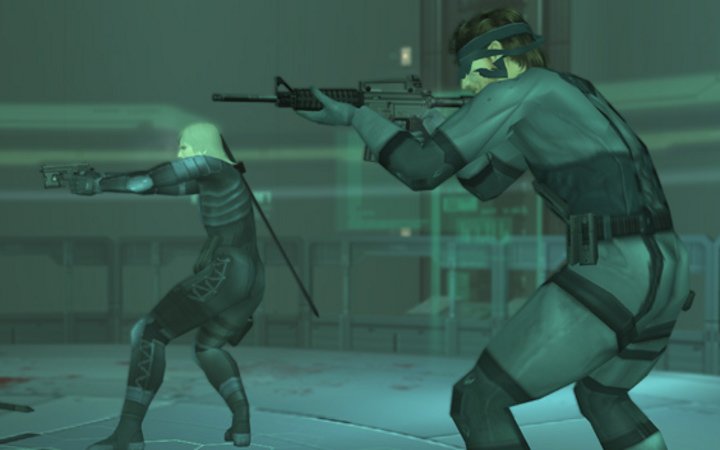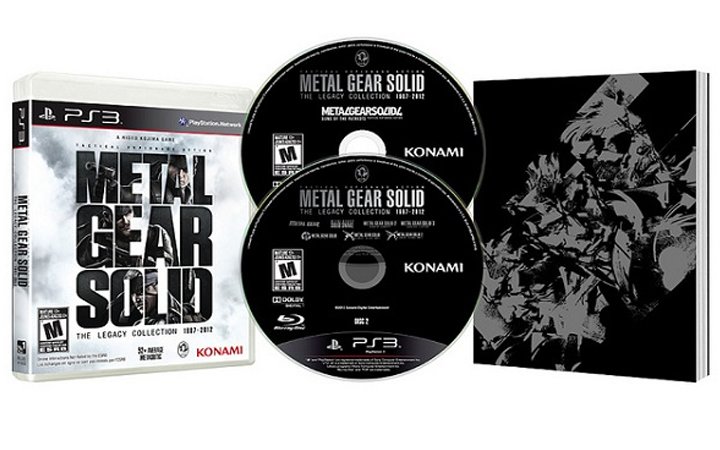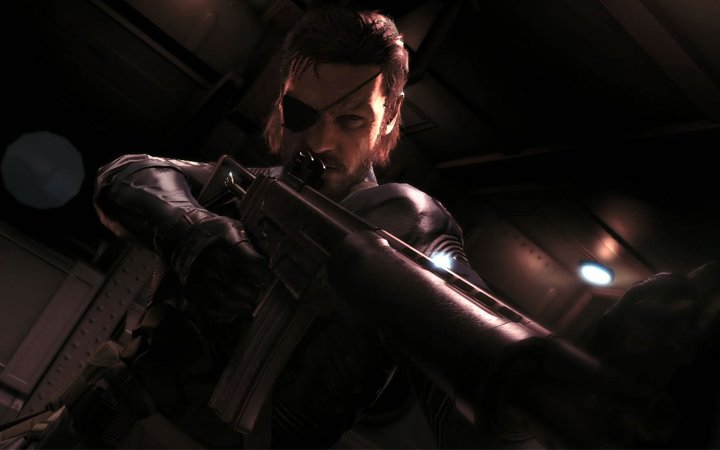As one of the most beloved franchises in gaming history, stealth-action series Metal Gear Solid is in its 26th year, having had 8 main narrative installments thus far, a plethora of re-releases, spin-offs, and a few cameo appearances in other games (Snake in Super Smash Bros. anyone?). The series is known for its crazy blend of eastern anime-esque character design and dialogue, phenomenal artwork by the legendary Yoji Shinkawa, and a brilliant sense of humor twinned with a more western reliance on gunplay through the archetypal ‘lone ranger’ hero.
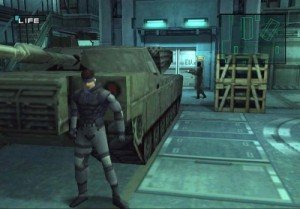
Over time, the series has definitely had a brick on the narrative gas pedal, barreling towards an eventual endgame whilst simultaneously ticking the boxes of ‘cult franchise’ and ‘blockbuster’. Thus if you take up the mantle of an ‘MGS fan’, you’re expected to know your Jonny Sasaki’s from your Sniper Wolfs, your Solids from your Solidus’, and your Laughing Octopus’ from your Liquid Ocelots. At the same time, there are many elements of MGS that are just big, dumb fun and with unique characters and set pieces, this leads to fantastic sales figures and a hulking case of ‘sequelitus’.
However, series creator Hideo Kojima and his team know exactly what they’re doing with each iteration, and due to the humongous budgets MGS games now take to create, their subsequent reveals and extended showcases at the likes of this years’ E3 are very much events in themselves. Kojima loves to craft trailers that hint at the larger narrative or tease returning characters and plot threads, and it has to be said that if you’re already strapped into the MGS hype machine, it’s one hell of a ride every few years.
With MGS V on the horizon comprising the next 2 games in the series’ main canon (prologue Ground Zeroes and main game The Phantom Pain), it’s the perfect time to release a ‘catch-all’ boxset of the necessary titles a Metal Gear newbie would need to get stuck in and caught up.
Understandably, the idea of buying 8 games at once alongside 2 animated motion comics of the first two Playstation games is somewhat daunting; perhaps a more easily digestible palette-wetter would be more preferable for now?
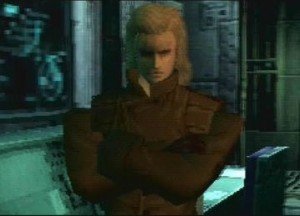
Content will be spoiler-free, as some of the twists and turns along the way are that of the most jarring cliff-side chicanes you’re ever likely to encounter. As the series has been around for so long, many aspects have bled through to popular gamer culture (Snake? Snake?! SNAAAKE?!), yet the fact remains that the best way to experience Metal Gear is the way it was intended: with the carefully cultivated ‘WTF moments’ unfolding alongside phenomenal art assets and a rich score that accompanies all of the games many cutscenes.
The main thread of the series involves many subjects from genetics and politics to cyber-warfare and skyscraper-sized mech battles. Still, there remains a constant theme of history repeating itself as sons somewhat inherit the sins of their fathers, providing a very malleable thread that ties the two protagonists’ timeframes together.
Star of the first 4 games (Metal Gear (1987) and Metal Gear 2: Solid Snake (1990) on the NES and the Solid stories that debuted in 1998), Solid Snake is a battle-hardened man of woman-baiting charm, complete with badass one-liners and a slick bandanna. He’s one of the most memorable video game characters of all time, and as voice actor David Hayter puts his all into bringing him to life, the ‘Snake voice’ is one of many things that will make any longtime fan go all fuzzy inside.
His many showdowns with antagonist ‘Liquid Snake/Ocelot’ (voiced in the first Playstation game by the very regal Cam Clarke), provide some of the coolest moments in the series, especially when one of them is flying a large gunship and the other is stranded atop a radio tower. Whilst Liquid is sometimes only a moustache-twirl away from ‘mua-ha-ha’-ing whenever he appears throughout the franchise, his verbal battles with Snake and his subsequent monologues about the state of the world, alongside his reasons for terrorizing it, are the stuff of legend in video game script writing.
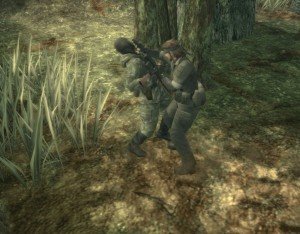
Big Boss on the other hand tackles the earlier chronology of the series, starting in 1964, with a far wider array of villains. First appearing as a playable character in MGS 3: Snake Eater (2004) and carrying through the handheld incarnations ‘Portable Ops’ (2006) and ‘Peace Walker’ (2010), he’s very much the embodiment of steadfast American patriotism. Dedicated to his mission and resolute in his ability to snap necks and bodyslam opponents, Snake Eater introduced ‘Close Quarters Combat (CQC)’ to the mechanics of the game, allowing players to grab human shields, throw guards into each other after tense standoffs, and initiate very fast, brutal takedowns with one button.
Whilst the series always had its influences proudly tattooed on muscle-covered sleeves, it was with MGS 3 that the boss encounters turned into the absurd (A character running on water in MGS 2: Sons of Liberty (2001) was already hinting at such things). Something of a dividing line for players, first boss ‘The Pain’ was a man who shot bees from his mouth. As well as this, the game featured ‘The End’, an extremely old man who had been living in woodland surroundings for so long, he had developed the ability to photosynthesize. Yes, it is at this point where you’ve either decided ‘Okay, I can get on board with that, it’s my kind of crazy’, or ‘What the hell were they thinking?!’
Both answers are totally understandable, but ponder this: wouldn’t you like to discuss with hundreds of gamers exactly how they took down said bee-producing man? Exactly.
The latest edition, MGS 4: Guns of the Patriots (2008), chose to show an aging Snake in a future battlefield struggling to overcome lifelong adversaries alongside the effects of war on his body and mind. His decreased well-being and overall withered aesthetic was a tongue-in-cheek metaphor for Kojima’s position in his relationship with the series at this point, and was also the last time David Hayter would voice the iconic character.
With MGS V returning to Big Boss’ story, again animated through increasingly lifelike motion-capture and voiced for the first time by A-list actor Keifer Sutherland, expect even more of the same epic showdowns, as well as a return to melee combat that hopefully fleshes out Big Boss’ move-set into the monolithic force he’s referred to as in the Solid Snake games.
Ground Zeroes and The Phantom Pain are sure to bring even closer the two ‘halves’ of the story by potentially linking the two main characters directly. Such a thing has been done before, but with the next-gen technology helping to fuel Kojima’s fantastically ludicrous ideas, all that can be done for now is to wise-up on the legacy of Metal Gear and attempt to prepare for what’s to come.
Even attempting to scratch the surface of the Metal Gear games is a feat that leaves but a faint mark, but hopefully enough attention can still be drawn to this fantastic franchise by doing so, and maybe you’ll consider sprucing up your knowledge before the next installment.
Besides, what the hell are nanomachines anyway?
All games mentioned in this article are available in Metal Gear Solid: The Legacy Collection alongside the bonus disc for Metal Gear Solid; VR Missions, and a 100-page art booklet. Although the version of MGS V shown so far is in development primarily for next-gen consoles, there will also be PS3 and Xbox 360 versions.

